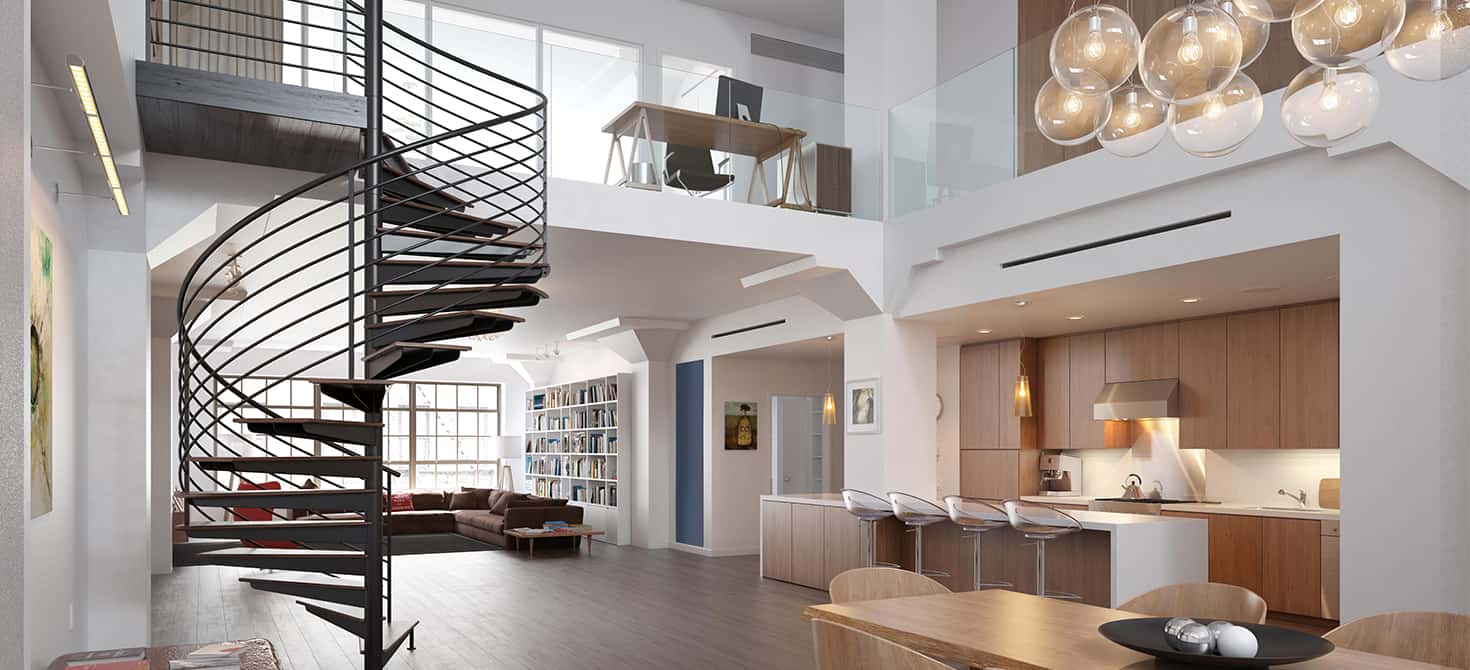- Furnishing tips
- 0 likes
- 2901 views

Today we are going to talk about interior lighting and the main rules to follow in order to create a well-lit environment. The first secret to achieving this goal is to create an accurate and well thought-out lighting design. As we have often pointed out in our articles, lighting is a fundamental aspect of interior design that should never be neglected.
Whether it is a new interior design project or a renovation, it is important to carefully plan and define the layout of your new electrical system, identifying the relevant lighting points: in this way the lighting of your rooms will be uniform and well integrated into the architecture.
Index
How to choose the lighting in your home
In choosing the most suitable home lighting system for your needs and requirements, the market nowadays offers a wide range of solutions and types of indoor lighting: we could give many examples of indoor LED lighting, chandeliers that make a lot of light, and also track lighting, wall-washer lights, LED strips and much more.
To illuminate a particularly dark living room without natural light, a congenial solution could be the choice of some types of lamps that respond to different functions, by means of a multi-level system. There will be a level dedicated to the main light, one dedicated to intermediate lights (e.g. the typical wall lamps on the floor, for lighting interiors from below) and yet one dedicated to lights oriented in a specific direction (e.g. on a desk or on a bookcase). This could be a good example of a living room lighting project.
Just as with living room lighting, kitchen lighting also needs to be designed sensibly. The kitchen is a particularly lively and active room in a house and should therefore be carefully lit. From a technical point of view we can say that for a kitchen it is advisable to foresee a light intensity that varies from about 200 to 500 lux respectively, obviously distributed in the various areas of the room.
The lighting in a kitchen must first of all be functional: the worktop and cooking area must be carefully lit. In a kitchen, just as in other rooms in the house, light also has a purely decorative function.
When lighting the bathroom area, it is best to choose lighting fixtures with a degree of protection in accordance with CEI 64-8/7, always referring to the area in which the fixtures will be installed.
For the washbasin area, our advice is to opt for the choice of a direct supplementary light: you can, for example, place the light as a wall or mirror applique, so as to facilitate for example the washing of the face, shaving or make-up.

Entrance or corridor lighting
When designing home furnishings, too often the lighting design of the entrance area or corridor is overlooked or not given due attention. This area of the house is the first approach to the house and in a sense its calling card. For this reason it is very important to enhance your entrance with a careful and accurate lighting design.
Regardless of the lighting solution you choose for the entrance area of your home, our advice is to opt for a diffuse and absolutely non-invasive light. From a technical point of view, a light source of approximately 100 lux is certainly the most suitable solution.
Bedroom lighting
For a good illumination of the sleeping area, you can decide to set up light points at the sides of the bedroom, or alternatively behind the bed. In addition to these, you can decide to set up a table lamp or even a floor lamp controlled by a switch.
Returning to the most important rules for a correct and effective lighting in your bedroom, the main mistake to avoid in these circumstances is the tendency that many have to exaggerate with the wattage: for the lighting of the night area, our advice is to keep between 50 and 150 lux.
Choice of light colour in interior design
The choice of light colour plays a key role in interior design. In recent years, thanks to the development of new LED technologies, it is possible to choose from a wide range of light colours, resulting in totally customisable environments that express one or the other character.
Cold light is usually associated with a feeling of great cleanliness and order. This is why cold light is used in interior design for example to illuminate walk-in wardrobes, as it does not change our perception of the colour of the furniture and does not warm up the surfaces (very important if the furniture is made of wood). Warm light, on the other hand, is synonymous with warmth and cosiness: this lighting solution is the ideal option for a relaxation area or for the living room or bedroom.
